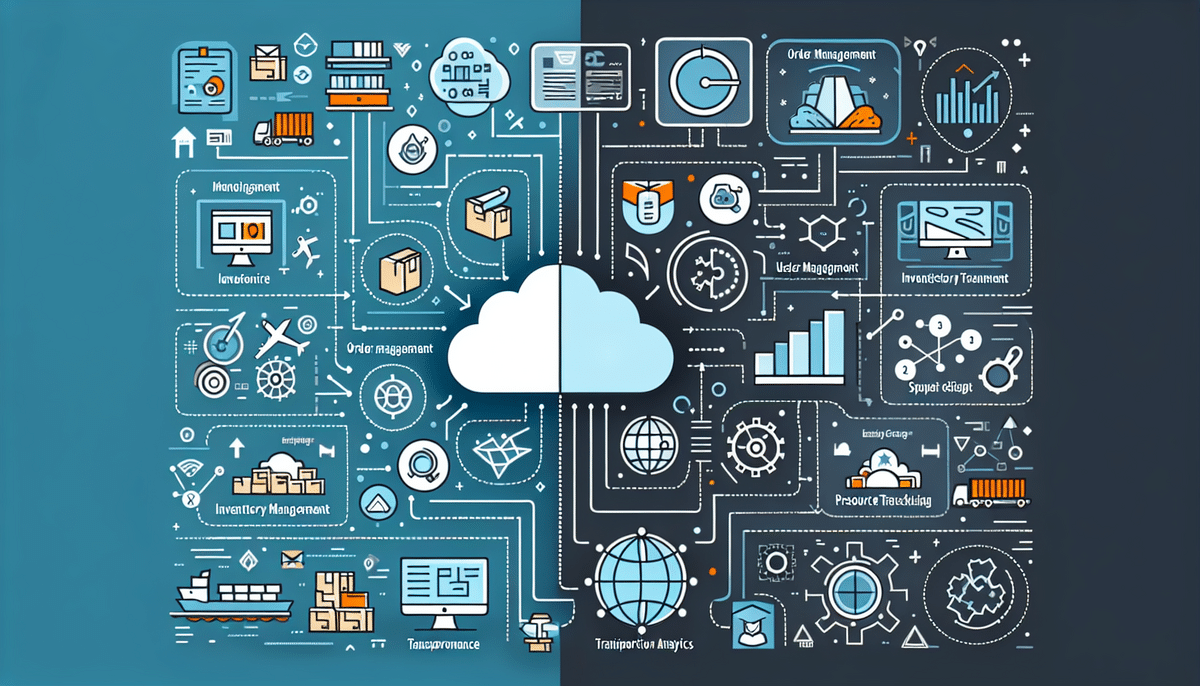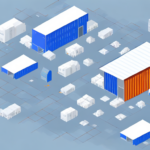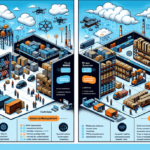3PL Central vs SAP Extended Warehouse Management (EWM)
When it comes to managing a warehouse, selecting the right software is crucial for operational efficiency and overall business success. Among the top contenders are 3PL Central and SAP Extended Warehouse Management (EWM). This comprehensive comparison will help you determine which system best aligns with your business needs.
Overview of 3PL Central and SAP EWM
3PL Central is a cloud-based warehouse management system tailored for third-party logistics providers. It offers robust features such as inventory management, order processing, and transportation management, enabling businesses to streamline and automate their warehouse operations effectively.
SAP EWM is an enterprise-grade warehouse management system designed for large corporations with complex supply chain operations. It provides a wide array of functionalities, including:
- Inventory management
- Resource tracking
- Order management
- Advanced analytics
- Labor management
These features empower businesses to monitor performance metrics and enhance operational efficiency over time.
Key Differences Between 3PL Central and SAP EWM
Understanding the primary distinctions between 3PL Central and SAP EWM is essential for making an informed decision:
- Target Audience:
- 3PL Central: Geared towards third-party logistics providers.
- SAP EWM: Suited for larger enterprises with intricate supply chains.
- Customization:
- 3PL Central: Highly customizable to fit specific business requirements.
- SAP EWM: Offers customization but often requires additional configuration.
- User Interface and Learning Curve:
- 3PL Central: Intuitive and user-friendly, ideal for businesses without extensive IT resources.
- SAP EWM: More complex, necessitating comprehensive training for effective use.
Feature Comparison
Both systems offer a comprehensive set of features, but they cater to different operational needs.
3PL Central
- Order management
- Inventory management
- Warehouse automation
- Barcode scanning
- Automated replenishment
- Wave and batch processing
SAP EWM
- Advanced analytics
- Resource tracking
- Predictive analytics
- Capacity planning
- Labor management
- Integration with other SAP products (e.g., SAP S/4HANA)
While 3PL Central excels in user-friendliness and automation, SAP EWM shines in scalability and advanced analytical capabilities, making it suitable for large-scale operations.
Pros and Cons
3PL Central
Pros
- Designed specifically for third-party logistics providers
- Ease of use with an intuitive interface
- High level of customization
- Integration with e-commerce platforms and transportation management systems
- Excellent customer support with dedicated teams
- Affordable subscription-based pricing
Cons
- Limited scalability for larger businesses
- Basic analytics capabilities compared to enterprise systems
- Occasional reliability issues and downtime
- Setup can be complex due to extensive customization options
- Higher implementation and maintenance costs for customized solutions
SAP EWM
Pros
- Robust analytics and reporting capabilities
- Advanced resource tracking and planning
- Seamless integration with other SAP modules (e.g., SAP ERP, SAP TM)
- Comprehensive end-to-end supply chain management
- Real-time visibility into inventory and warehouse operations
- Scalable for complex and large-scale supply chains
- Highly customizable to meet specific business needs
Cons
- Higher cost, making it less accessible for small to medium-sized businesses
- Requires specialized knowledge and expertise for configuration and maintenance
- Designed primarily for large enterprises, potentially overkill for smaller operations
- Complex functionality can be overwhelming for new users
Pricing Comparison
The pricing structures for 3PL Central and SAP EWM vary based on business size and required features:
- SAP EWM: Generally more expensive, especially for smaller businesses. It involves higher upfront costs but offers extensive features suitable for large enterprises.
- 3PL Central: More affordable with a subscription-based model, making it accessible for small to medium-sized businesses.
While SAP EWM may entail higher initial investments, its comprehensive features can provide long-term value for large organizations. Conversely, 3PL Central offers a cost-effective solution for businesses with simpler supply chain needs.
Implementation and Integration
Integration with Other Systems
3PL Central offers extensive integration capabilities with popular e-commerce platforms like Shopify, Amazon, and eBay, facilitating seamless order fulfillment and inventory management across multiple sales channels.
SAP EWM integrates seamlessly with other SAP systems such as SAP S/4HANA and SAP ERP, providing a unified and streamlined supply chain management solution for businesses already invested in the SAP ecosystem.
Training and Support
3PL Central
- Comprehensive knowledge base
- Support tickets and customer service
- Video training resources
- Live webinars and on-site training options
SAP EWM
- Support via phone and email
- Access to a user community
- Certification programs with training courses and exams
Both systems provide robust support and training options, ensuring that users can effectively utilize their features and maintain operational efficiency.
Case Studies: Successful Implementations
Numerous companies have successfully implemented 3PL Central and SAP EWM, demonstrating the effectiveness of each system in optimizing warehouse operations:
- XYZ Logistics implemented 3PL Central and achieved a 20% reduction in warehouse labor costs and a 15% increase in order accuracy. Enhanced real-time inventory visibility also boosted customer satisfaction.
- ABC Manufacturing adopted SAP EWM, leading to a 25% decrease in inventory carrying costs and a 30% improvement in order fulfillment rates. Enhanced tracking capabilities enabled quicker issue resolution within the supply chain.
Choosing the Best Warehouse Management System
Selecting the optimal warehouse management system depends on various factors, including:
- Business Size: Larger enterprises may benefit more from the extensive features of SAP EWM, while smaller businesses might find 3PL Central more suitable.
- Supply Chain Complexity: Complex operations with intricate logistics may require the advanced functionalities of SAP EWM.
- Specific Business Needs: Evaluate the unique requirements of your business to determine which system offers the necessary features and flexibility.
- Integration Capabilities: Ensure the chosen system integrates seamlessly with your existing software infrastructure, such as ERP systems or e-commerce platforms.
Carefully assessing each system's features, scalability, and customization options will guide you in making an informed decision that aligns with your business objectives.
Future Trends in Warehouse Management Software
The warehouse management software industry is rapidly evolving, driven by technological advancements and changing business needs. Key trends include:
- Increased Automation and AI: Leveraging artificial intelligence and robotics to enhance efficiency and accuracy in warehouse operations.
- Focus on Sustainability: Implementing eco-friendly practices and sustainable technologies to reduce environmental impact.
- Cloud-Based Systems: Moving towards cloud-based solutions for greater flexibility, scalability, and remote access.
- Enhanced Data Analytics: Utilizing big data and advanced analytics to gain deeper insights and drive data-driven decision-making.
Staying abreast of these trends will help businesses maintain a competitive edge and continuously optimize their warehouse management practices.
Conclusion
Both 3PL Central and SAP EWM offer distinct advantages for warehouse management, each catering to different business needs and scales. 3PL Central is ideal for third-party logistics providers seeking a user-friendly and customizable solution, while SAP EWM is better suited for large enterprises requiring comprehensive and scalable supply chain management capabilities.
By thoroughly evaluating your business's specific requirements, including size, operational complexity, and integration needs, you can select the warehouse management system that best supports your growth and efficiency objectives.






















